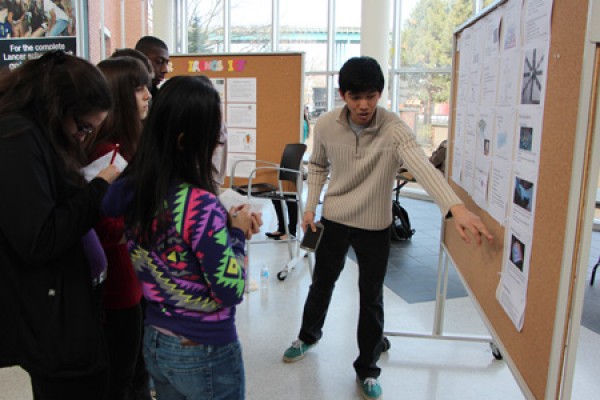Jonathan Carson didn’t know much about microfluidics until he visited the University of Windsor.
“I really feel like I understand this a lot better now,” said the Grade 11 chemistry student at Riverside Secondary School.
Along with about 20 of his classmates, Carson was in the CAW Student Centre on Wednesday to view the poster presentations created by students in chemistry professor Tricia Carmichael’s third-year materials class. As part of a class assignment, her students pick a modern chemistry subject, create a poster that explains it, and then present it to the high school students who come for a viewing.
“When you make a poster, you need an audience, and the truest test of knowing a subject is whether you can make someone else understand it,” said Dr. Carmichael, adding this is the third year students from Riverside have been invited for the field trip, which also included a chemistry magic show.
Riverside chemistry teacher Amy Root said her students were very excited about the trip.
“They’re interested to see the applications of chemistry, because in Grade 11, they’re learning the basics,” she said. “It’s really important for them to see the big picture.”
Carson was viewing a poster created by Aljonn Lacerna explaining how microfluidics – the movement of fluids through tiny, sub-millimeter scale tubes – can be used to create small chips where chemicals can be synthesized in experiments far more quickly, efficiently and inexpensively than many lab tests.
“It’s basically a lab on a chip,” he said, noting that microfluidics can have applications for everything from bomb detection to modern electronic devices.
Lacerna said he felt like he was able to adequately explain the concept to students who gathered around his poster. Carmichael said the high-schoolers will report to Root on which projects they understood best.

